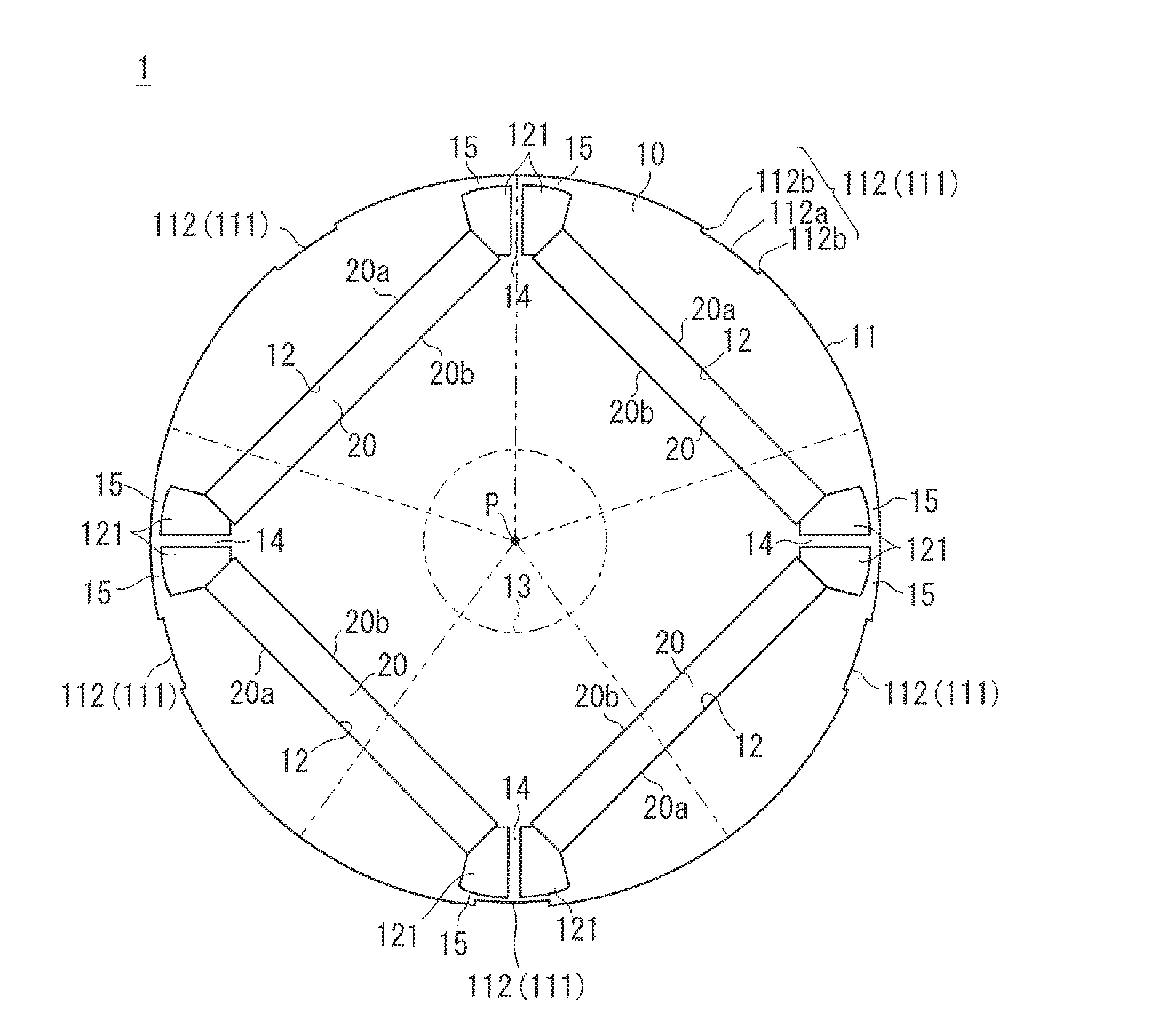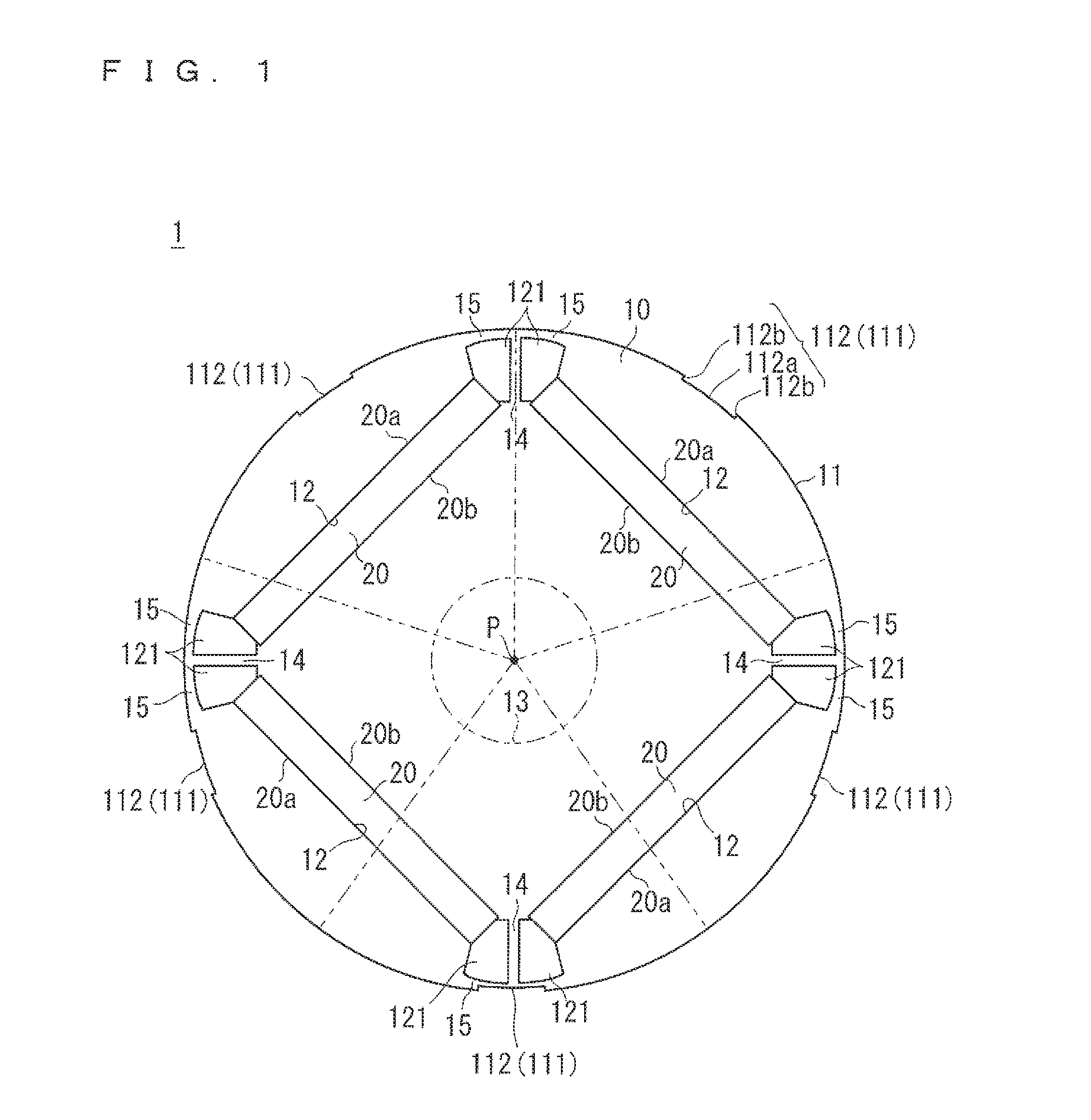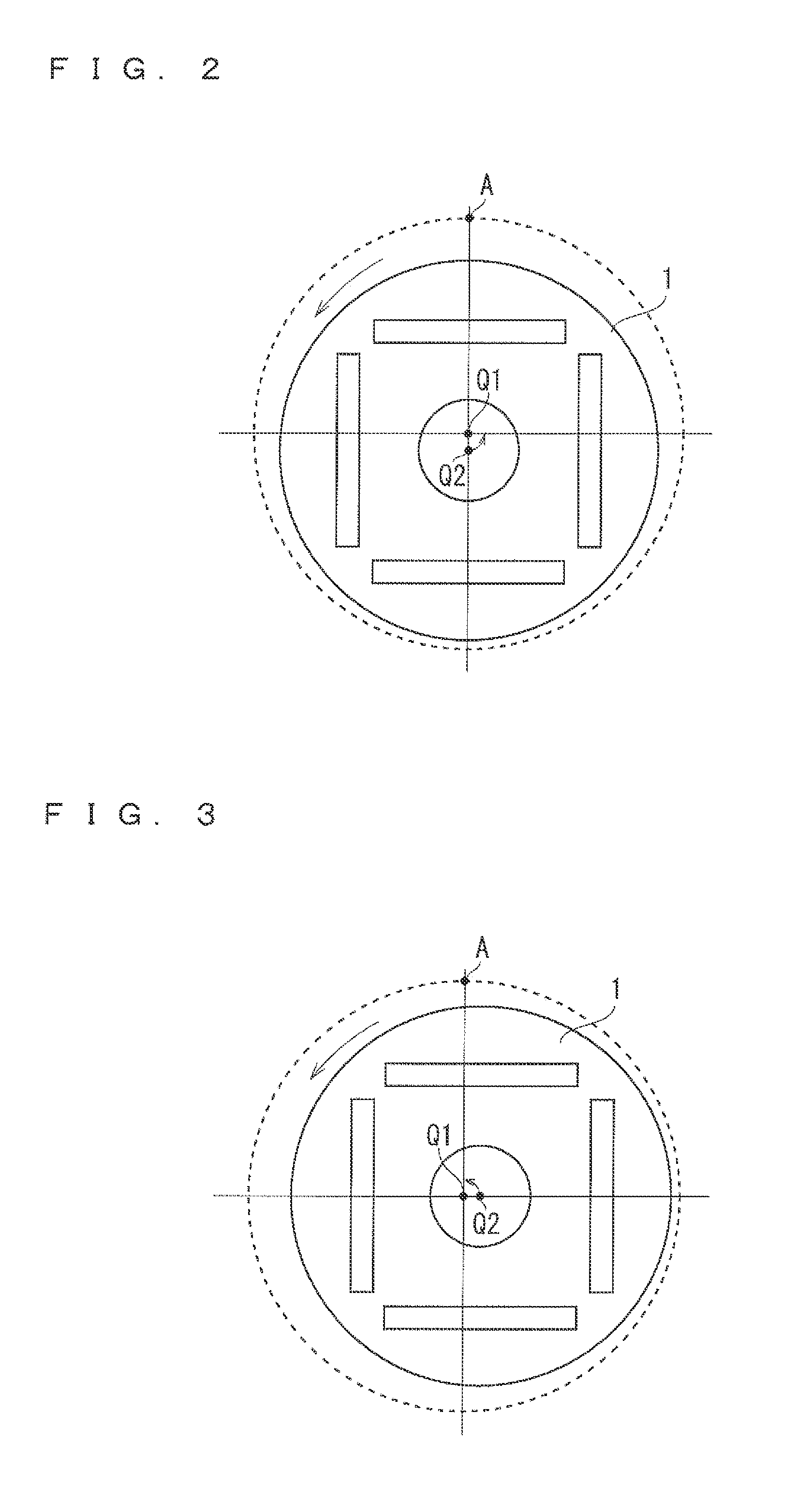Rotor
- Summary
- Abstract
- Description
- Claims
- Application Information
AI Technical Summary
Benefits of technology
Problems solved by technology
Method used
Image
Examples
first embodiment
[0047]FIG. 1 shows a cross-section perpendicular to an axis P (which will be described later) of a rotor 1. As illustrated herein, the rotor 1 includes a rotor core 10 and a plurality of permanent magnets 20.
[0048]The plurality of permanent magnets 20 are, for example, rare-earth magnets (such as rare-earth magnets containing neodymium, iron, boron, as a main component), and arranged annularly around the predetermined axis P. In an example shown in FIG. 1, each of the permanent magnets 20 is shaped into a rectangular parallelepiped plate. Each of the permanent magnets 20 is arranged in such a position that, at the center thereof with respect to a direction of a circumference (hereinafter simply referred to as a circumferential direction) whose center is placed at the axis P, a thickness direction thereof can be coincident with a direction of a diameter (hereinafter simply referred to as a diameter direction) whose center is placed at the axis P. Here, it is not always necessary that...
second embodiment
[0087]A rotor 1 illustrated in FIG. 9 is different from the rotor 1 illustrated in FIG. 1 in terms of the number of the magnetic barriers 111.
[0088]In an example shown in FIG. 9, at least one of the magnetic barriers 111 is provided in each of regions obtained by equally dividing the rotor core 10 into ((p+1)×2) in angle around the axis P (in the example shown in FIG. 9, the groove portions 112). In FIG. 9, an example of such regions are shown as regions each sandwiched between adjacent two of the alternate long and two short dashes lines extending radially from the axis P as the center.
[0089]As described in the first embodiment above, referring to the expression (3), the p-th harmonic component of the magnetic flux density B2 is caused by the rotating motion of the rotor 1, and is a component that contributes to a torque of a rotary electric machine and does not cause an increase of vibrations. The other harmonic components are components that can be a factor for an electromagnetic...
third embodiment
[0100]Rotors 1 shown in FIGS. 13 and 14 is different from the rotors 1 shown in FIGS. 1 and 9, in terms of the configuration of the magnetic barrier 111.
[0101]The magnetic barriers 111 are shown as holes 113. A fluid, such as air or a cooling medium, is loaded within the holes 113. Thus, the holes 113 can function as magnetic barriers. The holes 113 are provided between the outer circumferential side surface 11 of the rotor core 10 and the permanent magnet 20 (and more specifically, between a circular ring passing through the permanent magnet 20 and the outer circumferential side surface 11). The magnetic barrier 111 is not limited to the hole 113, and the hole 113 being loaded with a non-magnetic material may be adoptable. If a non-magnetic material is loaded, the strength of the rotor 1 can be improved.
[0102]In the examples shown in FIGS. 13 and 14, the magnetic barrier 111 (hole 113) has an elongated shape when seen in the axial direction, and is arranged with the long side there...
PUM
 Login to View More
Login to View More Abstract
Description
Claims
Application Information
 Login to View More
Login to View More - R&D
- Intellectual Property
- Life Sciences
- Materials
- Tech Scout
- Unparalleled Data Quality
- Higher Quality Content
- 60% Fewer Hallucinations
Browse by: Latest US Patents, China's latest patents, Technical Efficacy Thesaurus, Application Domain, Technology Topic, Popular Technical Reports.
© 2025 PatSnap. All rights reserved.Legal|Privacy policy|Modern Slavery Act Transparency Statement|Sitemap|About US| Contact US: help@patsnap.com



